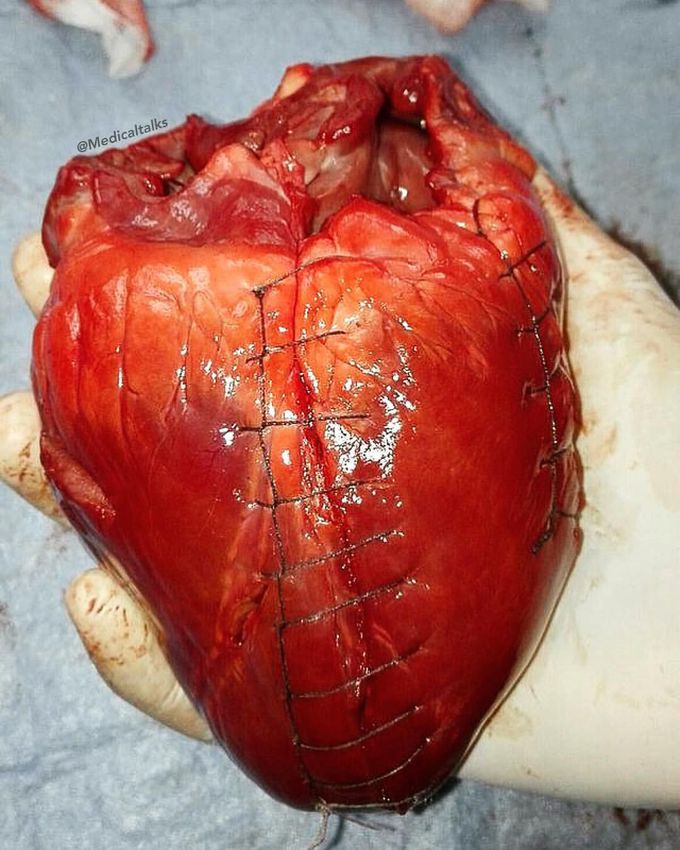


Cardiac sutures!!
Wounds of the heart are attended with two important sources of danger, namely, excessive hemorrhage and interference with the action of the heart from the pressure of the blood in the pericardial cavity. If you’ve ever seen sutures on the heart’s surface, you’ll probably guess ventricular repair, or cardiorrhaphy, top place, which has long been one of the most dramatic and lifesaving procedures performed in the emergency department. Whether a blunt or penetrating injuries, clinical presentations can vary widely, from hemodynamically stable to cardiac arrest. Cardiac tamponade is commonly thought to correlate with the Beck triad (hypotension, elevated jugular venous pressure, and muffled heart sounds), but these symptoms are found only in a minority of patients. Signs of shock (eg, tachycardia, hypotension, diaphoresis, and agitation) are better correlated with tamponade and should, therefore, be assessed. Once a cardiac wound or laceration is identified, hemostasis should be obtained quickly with a finger or Foley catheter while closure materials are prepared, commonly a monofilament suture (eg, 2-0 polypropylene) they can be used to place continuous or interrupted sutures. However, suturing of cardiac wounds over pledgets is the time-honored technique. Because of its time-consuming and complicated nature, however, more modern surgeons do not recommend this in the emergency department. Surgical staples may be a faster and safer closure method than the traditional approach using suture with pledgets. Heart surgery is truly modern surgery.
Hemodynamic stimuli&nonhemodynamic stimuliEffects of sugar on teeth

